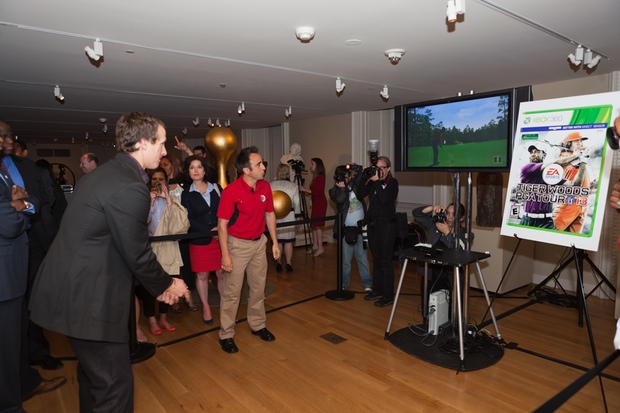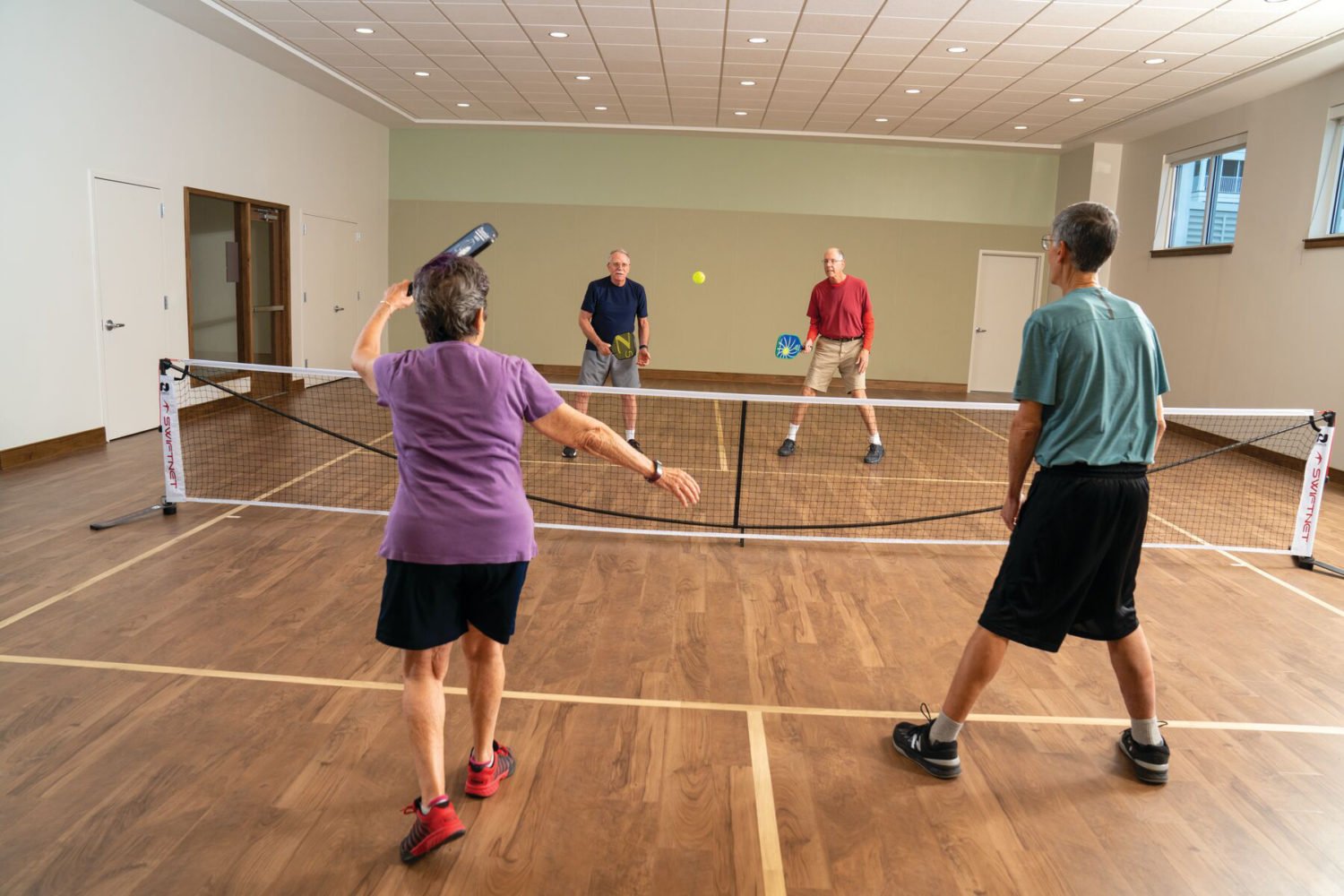To the parents of mini gaming addicts fearing a life of obesity awaits their child, relax. Health and Human Services secretary Kathleen Sebelius and the President’s Council on Fitness, Sports, and Nutrition (PCFSN) now say that 60 minutes of gaming a day can be a good thing–as long as the video games fall into the “active gaming” category.
Sebelius, as well as members of the PCFSN, including Dominique Dawes, Michelle Kwan, Billie Jean King, and Allyson Felix, and representatives from the Entertainment Software Association held an Active Gaming Showcase at the Walker-Jones Education campus on Monday to launch the Active Play Presidential Active Lifestyle Award (PALA+) Challenge. A reception at the Smithsonian American Art Museum, home of the “Art of Video Games” exhibition, was also held Monday evening to celebrate the partnership, which is an effort to motivate kids and their parents to turn sedentary screen time into active time. Youngsters must move for at least 60 minutes a day, five times a week, over a six-week period in order to earn PALA+, which they can track online.
“Many of our schools don’t have adequate playgrounds, but these games are exercise routines that can be brought into any classroom or small space,” Sebelius said.
Video game time is not intended to replace outdoor exercise, but merely to “build on the excitement around active video games to promote healthy lifestyles and meet people where they are,” according to the PCFSN co-chair and New Orleans Saints quarterback Drew Brees. Across the board, the athletic champions represented at the exhibit felt that outdoor exercise is still a crucial component of daily life, and should be supplemented, not replaced, with active video games.
Felix, a track and field Olympian, added, “Kids were already playing video games, so it is nice to meet them half way by giving them a chance to have fun while exercising.”
Seven of the country’s leading video game producers were represented in the active video gaming showcase, including Microsoft, Nintendo, Sony, Electronic Arts, Ubisoft, Take-Two Interactive, and Konami. Demonstrations of games such as Wii Fit and Dance Dance Revolution were available for guests to test to show how active video games can get kids to work up a sweat while having fun.
Take-Two vice president Alan Lewis said he feels active gaming is beneficial in the fight against obesity because kids don’t even feel like they are exercising.
“When they are dancing along with their favorite characters, they don’t think about the fact that they are exercising; they just know they are having a fun, engaging experience. Plus, the whole family can join in,” he said.
And how were the eats at the health-centric soiree? Decidedly more delicious than anticipated. Guests nibbled on vegetarian wheatberry sliders, crunchy veggies, goat cheese torta, and mini ice cream cones. Of course, Sebelius suggested using the game demonstrations as a way of “working off the snacks.”
Brees was seen doing just that, as he tested out Kinect Sports: Season 2, a virtual football game that involved running in place to escape tackles, dodging “hits” from linemen, and throwing perfectly timed passes to receivers. No surprise to the crowd, Brees was a natural. After two touchdowns in mere minutes, one fan crowed, “It’s like you’ve done this before!”













